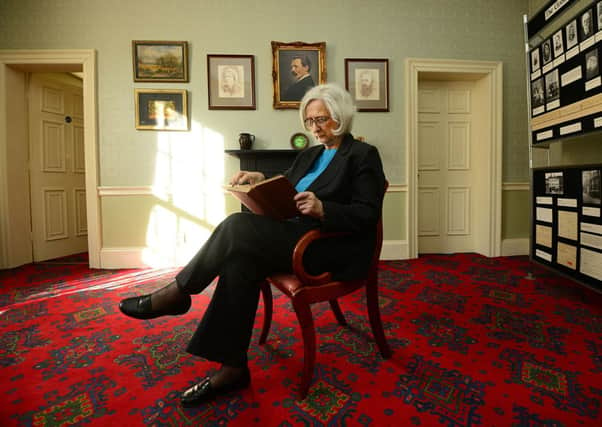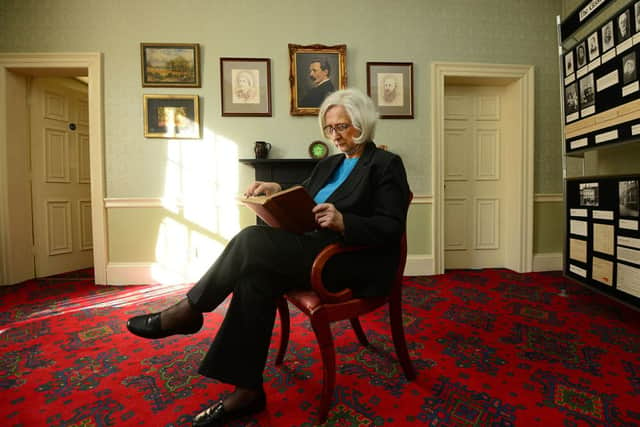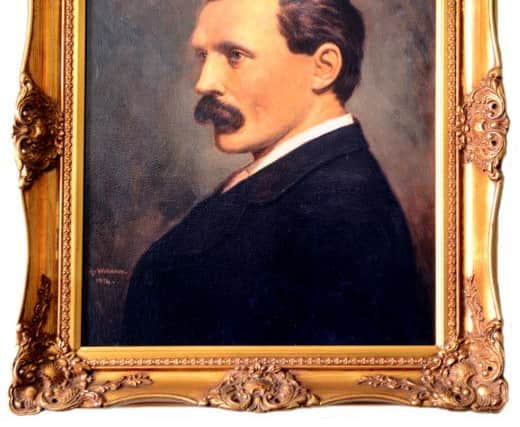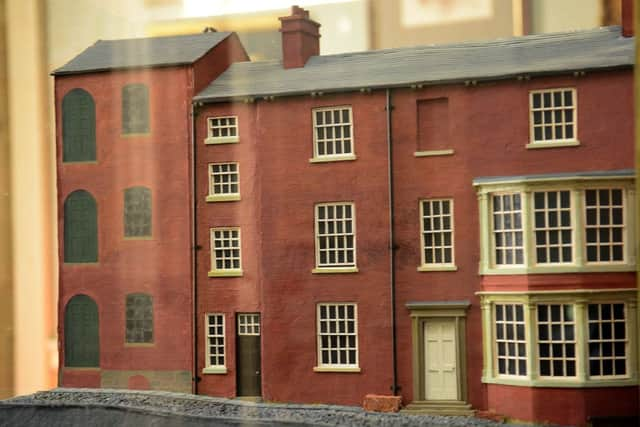Video: Inside Yorkshire’s least visited attraction


Pat Colling reckons the Victorian novelist George Gissing is “Yorkshire’s best-kept literary secret”. Recent news about his birthplace, down a narrow lane in the centre of Wakefield, seems to bear her out.
In a survey by VisitEngland, the Gissing Centre housed in the author’s birthplace was named the country’s fifth least-visited tourist attraction. In 2013, it welcomed just 118 visitors – though that’s a multitude compared to the least-visited attraction of all: Beacon Hill Fort, a radar tower in Essex, which pulled in six people.
Advertisement
Hide AdAdvertisement
Hide Ad“We were a bit disappointed,” admits Pat, secretary of the Gissing Trust, which runs the Centre, a two-room museum. “We had more visitors in the previous two or three years, but we don’t have thousands because we’re a little museum. It’s not somewhere you can come for a day out; it’s a nice place to come if you’re going to the Hepworth or the Mining Museum.”


We’re browsing round the Centre, which next year celebrates 25 years in this solid, bow-windowed Georgian house in Thompson’s Yard, through a broad archway on Westgate, where Gissing’s father ran a chemist’s shop. Out on the main street, the NatWest bank boasts a blue plaque to the author, a friend of Thomas Hardy and HG Wells. A Wakefield street is named after him. But otherwise, the city hasn’t made much fuss about a man admired by a host of writers whose reputations have proved more durable than his own.
“I am ready to maintain that England has produced very few better novelists,” wrote George Orwell. Arnold Bennett was equally enthusiastic about his books – two dozen of them, with New Grub Street, a study of hack writers coming to terms with changing literary times, perhaps now the best-known.
“Gissing was a born writer,” said Virginia Woolf. “His men and women think.” What many of them think about much of the time is poverty, inequality, injustice and failure – a fair reflection of the writer’s own hapless life.
Advertisement
Hide AdAdvertisement
Hide AdBorn in 1857, he seemed hell-bent on self-destruction. While still a student – a brilliant one – in Manchester, he took up with a 17-year-old prostitute and stole from fellow students to support her. He was stripped of his academic prizes and sentenced to a month’s hard labour.


He married the prostitute, the marriage failed, as did another to an equally unsuitable woman who became insane. He struggled to make a living and for much of his life endured grim poverty
“Other writers wrote about the London slums,” says Pat Colling. “He and his first wife actually lived in them.” After suffering from lung disease for many years, he died in France at the age of 46. The American novelist Henry James was right when he said Gissing had struck him as “quite particularly marked out for what is called an unhappy ending”.
All this is reflected at the Centre, whose limited opening times – a couple of hours on Saturday afternoons from May to October, by appointment at other times, staffed by volunteers – may help explain its lack of visitors.
Advertisement
Hide AdAdvertisement
Hide AdGissing spent his first 14 years in Wakefield, whose atmosphere, he later reflected, “would soon make a dullard of me”, and the Centre’s displays trace his local connections through photographs, manuscripts, memorabilia and a useful scene-setting video. Exhibits range from a photograph of him as a schoolboy – serious, rather stiff – to his housekeeper’s tablecloth and hairbrush. Dominating the main room is a brooding portrait of him, bushy-moustached and gazing thoughtfully out of the frame.


The birthplace was threatened with demolition in 1977, but was saved thanks to the late Clifford Brook, a former secretary of the Trust. He almost literally stopped the demolition men in their tracks and Wakefield’s Civic Society and Historical Society campaigned successfully to get the building listed.
“It was a close shave,” says Ros Stinton, one of the Trust’s 12 trustees. Together with Michael Compton, she runs the memorably named Idle Booksellers in the Bradford village of Idle. They are probably the world’s leading specialist dealers in books by and about Gissing, with a current stock of around 1,300 of them.
All the novels – many long out of print – are there, including an extremely rare first edition of the very first, Workers in the Dawn, priced at £1,800. At the other end of the price scale are £5 paperbacks of New Grub Street. “I try to have cheap reading copies for people who just want to read them, rather than book collectors,” says Ros.
Advertisement
Hide AdAdvertisement
Hide AdGissing’s works haven’t always been so easily available. Orwell, writing in 1948, found it impossible to track down a copy of New Grub Street to buy. So, as he wrote, “when I have read it, it has been in soup-stained copies borrowed from public lending libraries”.
Orders come in to Idle Booksellers every fortnight or so, many from America, Italy, France and Japan, reflecting a solid international interest in Gissing. Ros shares that interest and has read most of the novels two or three times. “I like the realism of some of them and his characterisation is terrific; for a male author, he’s very good at characterising women.”
She takes a pragmatic view of the Centre. “It’s not Haworth, and Gissing isn’t one of the Brontes,” she says. “It’s never going to attract the numbers Haworth attracts, but it will attract the faithful few.”
Those faithful few acclaim the books as pioneering social realism. They are heavily autobiographical and sometimes weighed down by gloom and hopelessness. Orwell identified “a certain low-spiritedness, and air of loneliness” in Gissing’s outlook. Certainly the feel-good factor isn’t high.
Advertisement
Hide AdAdvertisement
Hide Ad“As long as people are miserable, he will write about them,” says Pat Colling, who wrote a dissertation on him for her Masters degree in Victorian literature at Leeds University. I suggest that he dealt with many of the same issues as Dickens, but without Dickens’ humour.
“Gissing does wry, but he doesn’t do witty,” says Pat. “He deserves more recognition than he has had. I don’t think he should be dismissed as a minor Victorian novelist. He’s perhaps up at the top of the second division.”
She admits to a sort of love-hate relationship with him. “Many scholars think New Grub Street is his finest work; I think it’s a three-volume whinge. He’s full of self-pity and intellectual snobbery. What seemed to annoy him is that he had to work for a living. He suffered from self-inflicted alienation, but he’s a brilliant observer and recorder of the subtleties of the England class system. He doesn’t like the working class, but he doesn’t caricature them or represent them as the lumpen proletariat. He’s appalled by the conditions people live in and is angry. He wants them to have better lives but he still wants them to know their place.”
It’s time to go. But there’s just one more thing. “I can’t let you leave without signing the visitors’ book,” says Pat. Every signature counts.
Advertisement
Hide AdAdvertisement
Hide AdUntil next May, when Saturday afternoon opening resumes, the Gissing Centre is open only by appointment. Admission free. Ring 01484 663214 or email [email protected].
Idle Booksellers: 01274 613737, www.idlebooksellers.co.uk